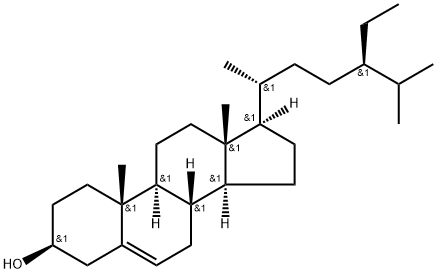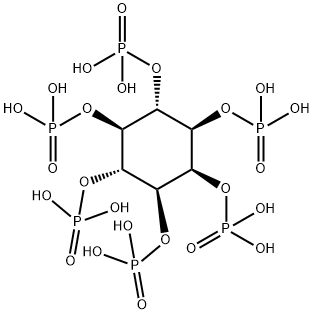Phytol
Synonym(s):3,7,11,15-Tetramethyl-2-hexadecen-1-ol
- CAS NO.:150-86-7
- Empirical Formula: C20H40O
- Molecular Weight: 296.53
- MDL number: MFCD00151280
- EINECS: 205-776-6
- SAFETY DATA SHEET (SDS)
- Update Date: 2024-05-13 13:28:24

What is Phytol?
Description
Phytol is a diterpene alcohol obtained from the degradation of chlorophyll and has been used in the synthesis of Vitamins E and K. During the digestion process of ruminants, phytol is liberated from chlorophyll and converted to phytanic acid to be stored in fats. While humans cannot derive phytol from chlorophyll, free phytol, obtained from the consumption of ruminant adipose tissue and dairy products, is readily absorbed in the small intestine and converted to phytanic acid. Phytanic acid accumulates to toxic levels in a number of metabolic disorders, and the conversion of phytol to phytanic acid has been shown to be regulated via the activation of peroxisome proliferator-activated receptor α (PPARα). Phytol and its metabolites have also been reported to activate retinoid X receptors (RXRs; Kis range from 2.3-67.2 μM) and to promote the activity of PPAR/RXR heterodimers. Phytol also demonstrates sedative and anxiolytic effects through interaction with the GABAA receptor, and it has been explored as an antischistosomal agent in a mouse model of schistosomiasis.
The Uses of Phytol
trans-Phytol is a reagent that is used in the preparation of α-tocopherol analogs as mitochondrial antioxidants.
Properties of Phytol
| Melting point: | <25 °C |
| Boiling point: | 202-204 °C (10 mmHg) |
| Density | 0.85 |
| Flash point: | 179℃ (Cleveland open test) |
| storage temp. | Inert atmosphere,2-8°C |
| solubility | Chloroform, Methanol (Sparingly) |
| form | Oil |
| color | Light Yellow to Yellow |
Safety information for Phytol
| Signal word | Danger |
| Pictogram(s) |
 Corrosion Corrosives GHS05  Exclamation Mark Irritant GHS07  Health Hazard GHS08  Environment GHS09 |
| GHS Hazard Statements |
H302:Acute toxicity,oral H317:Sensitisation, Skin H318:Serious eye damage/eye irritation H360:Reproductive toxicity H370:Specific target organ toxicity, single exposure H372:Specific target organ toxicity, repeated exposure H411:Hazardous to the aquatic environment, long-term hazard |
| Precautionary Statement Codes |
P201:Obtain special instructions before use. P202:Do not handle until all safety precautions have been read and understood. P260:Do not breathe dust/fume/gas/mist/vapours/spray. P264:Wash hands thoroughly after handling. P264:Wash skin thouroughly after handling. P270:Do not eat, drink or smoke when using this product. P272:Contaminated work clothing should not be allowed out of the workplace. P273:Avoid release to the environment. P280:Wear protective gloves/protective clothing/eye protection/face protection. P391:Collect spillage. Hazardous to the aquatic environment P302+P352:IF ON SKIN: wash with plenty of soap and water. P333+P313:IF SKIN irritation or rash occurs: Get medical advice/attention. P405:Store locked up. |
Computed Descriptors for Phytol
| InChIKey | BOTWFXYSPFMFNR-PFIWFTBQSA-N |
Abamectin manufacturer
New Products
3-N-BOC-(S)-AMINO BUTYRONITRILE 4-Piperidinopiperidine 2-Methyl-4-nitrobenzoic acid 2-(4-bromophenyl)-2-methylpropanoic acid 4-Acetyl-2-methylbenzoicacid Acetyl-meldrum's acid Ethyl-4-Pyrazole carboxylate 2,6 Di acetylpyridine 2,6-Pyridinedimethanol 5,7-Dichloro-3H-Imidazo[4,5-B]Pyridine 5-Bromo-2-Methoxy-4-Methyl-3-Nitropyridine 2-Fluoro-5-Iodopyridine 2-Fluoro-5-Methylpyridine 2-Chloro-3-Bromo-5-Amiopyridine METHYL-4-(BUTYRYLAMINO)3-METHYL-5-NITROBENZOATE TRANS-CYCLOBUTANE-1,2- DICARBOXYLIC ACID 5-Nitro indazole R-(-)-5-(2-AMINO-PROPYL)-2-METHOXY-BENZENESULFONAMIDE 1,3-cyclohexanedione 4-Aminophenaethylalchol (S)-(+)-4-BENZYL-2-OXAZOLIDINONE 3-NITRO-5-ACETYL IMINODIBENZYL 4-FLUORO PHENYL MAGNESIUM BROMIDE 1.0 M IN THF 1-HYDROXY-4-METHYL6-(2,4,4-TRI METHYL PHENYL)-2-PYRIDONE MONO ETHANOL AMINE(PIROCTONE OLAMINE)Related products of tetrahydrofuran








You may like
-
 Phytol mixture of isomers 98%View Details
Phytol mixture of isomers 98%View Details -
 2,3 Dichloro-4-Hydroxy Aniline 39183-17-0 99%View Details
2,3 Dichloro-4-Hydroxy Aniline 39183-17-0 99%View Details
39183-17-0 -
 17673-56-2 99%View Details
17673-56-2 99%View Details
17673-56-2 -
 13463-67-7 Titanium Dioxide 99%View Details
13463-67-7 Titanium Dioxide 99%View Details
13463-67-7 -
 143-07-7 99%View Details
143-07-7 99%View Details
143-07-7 -
 Ethanolamine 141-43-5 99%View Details
Ethanolamine 141-43-5 99%View Details
141-43-5 -
 20776-67-4 99%View Details
20776-67-4 99%View Details
20776-67-4 -
 acid blue 113, acid navy blue , wool navy blue 0View Details
acid blue 113, acid navy blue , wool navy blue 0View Details
3351-05-1